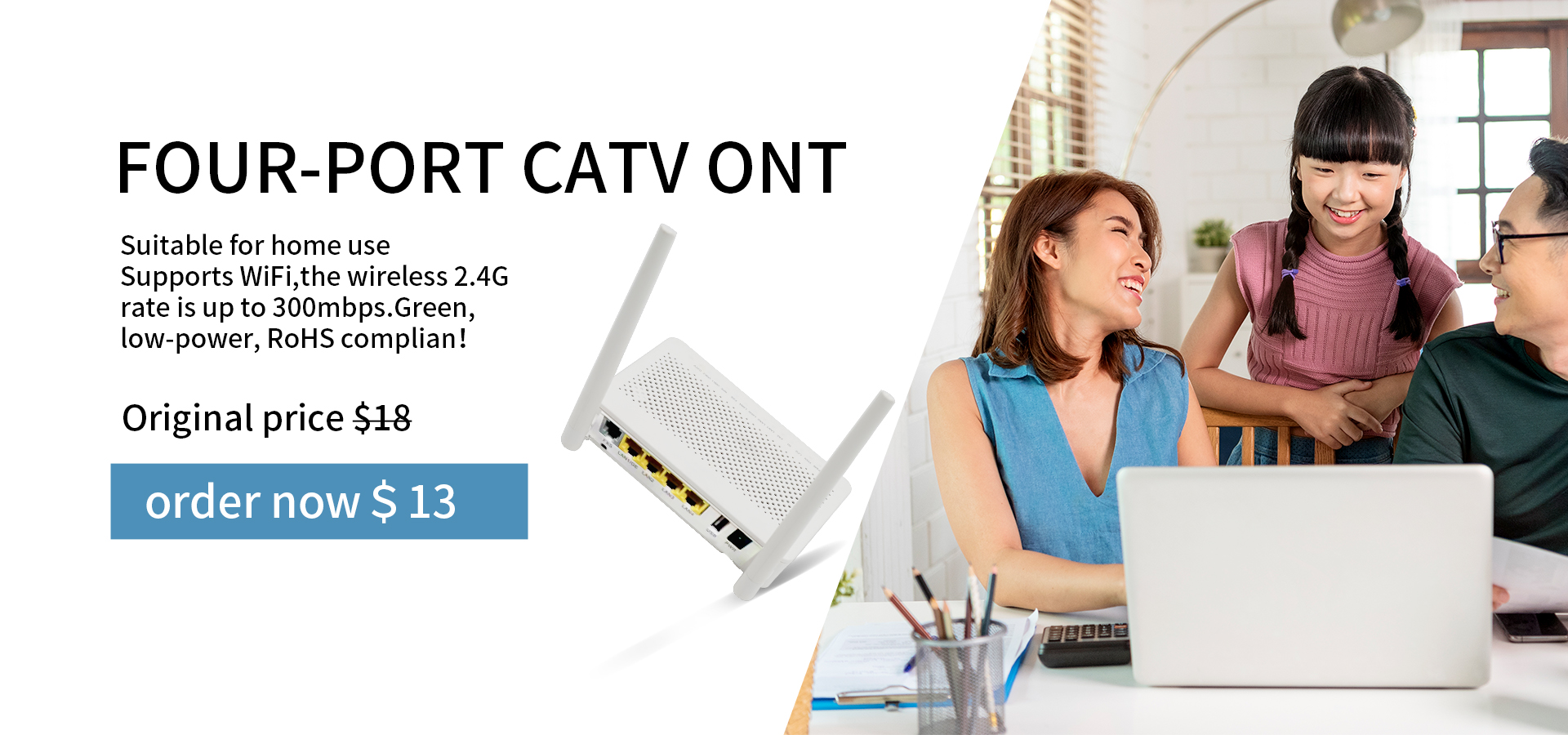
An ONU (Optical Network Unit) is a device used to connect end-users to a fiber optic network in FTTH (Fiber to the Home) or FTTP (Fiber to the Premises) deployments. Configuring an ONU allows it to establish communication with the OLT (Optical Line Terminal) and provide internet connectivity to home users. Here are the steps to configure an ONU:
First, install the ONU device in your home. Choose a location close to the fiber optic terminal or drop cable entering your house. Ensure proper ventilation and accessibility for future maintenance. Connect the fiber optic cable from the outside plant to the ONU's optical port.
Some ONU models require 12V DC power through an AC adapter while others use PoE (Power over Ethernet). If PoE, connect the ONU to an Ethernet port on the OLT or power injector. If using AC power, plug in the adapter. Verify the power light turns on.
The ONU discovers the OLT (Optical Line Terminal) on the service provider network through a process called auto-negotiation. This handshake exchanges technical parameters like modulation types and establishes synchronization.
Some ONUs have an autoranging optical receiver that can support multiple network standards like GPON, XGPON or EPON. Others are fixed, only supporting one type. The OLT assigns the ONU an upstream channel, downstream channel and allocates bandwidth.
Use the web interface or CLI to configure the ONU's management settings. Access it by connecting your computer to the ONU's Ethernet port or wirelessly.
Log in and navigate to the configuration section. Set admin credentials, IP addressing, date/time, etc. Many ONUs have built-in routers so you can configure WiFi SSIDs and passwords for wireless access.
Advanced settings allow configuring VLANs, multicast filtering, DHCP services, firewall rules and more.
ONUs with integrated routers have several ports for connecting end-user equipment - computers, phones, IP cameras, etc. Most will have 4 x Gigabit Ethernet ports for LAN connectivity. Higher-end models may have SFP cages for fiber links.
CATV ONUs include an RF coaxial port to connect a TV or set-top box to receive video services. Voice ONUs have POTS or VoIP ports to provision telephone service. WiFi models allow connecting your wireless devices to the internal access point.
Once configured, the ONU provisions high-speed internet, video, and voice services to your home. The web UI allows monitoring usage, configuring QoS policies, updating firmware, checking diagnostics, and more.
Bandwidth profiles control the maximum upstream/downstream rates and can be adjusted based on your subscription. Temporary speed boost options may also be available when needed.
Configuring an ONU enables subscribers to enjoy the high-speed fiber optic connectivity delivered over GPON, XG(S)-PON and EPON networks. Selecting the right ONU model with appropriate interfaces and features helps optimize the end-user experience. Proper installation, configuration and management of ONUs is key for providers to offer reliable and high-quality triple-play services.